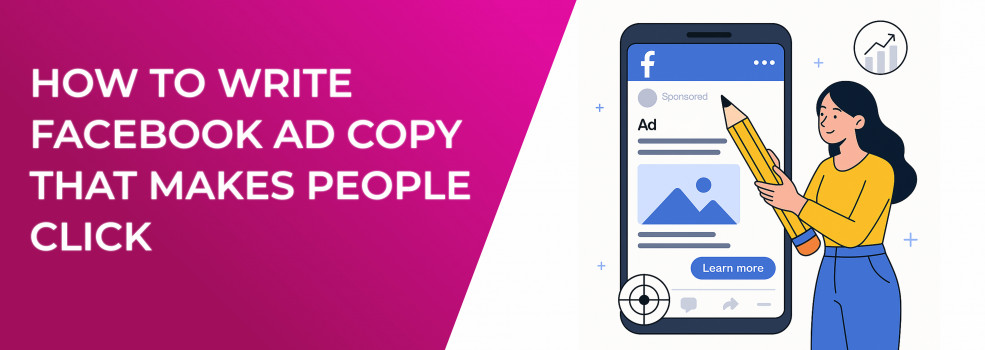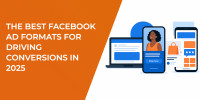Facebook’s news-feed is a fast-moving mix of family photos, group updates and brand messages. Ad impressions Facebook numbers climb every quarter, yet people spend only fractions of a second deciding whether to pause. Smart copywriting remains the simplest lever for boosting results. The guidance below blends real-world practice with insights drawn from Meta ads benchmarks and common Facebook ad optimization tips, so you can cut through the noise without ballooning costs.
1 Know Exactly Who You Are Talking To
Every high-performing campaign is grounded in a clear audience insight. Start by reviewing your Pixel events, look at the age and interest clusters inside Ads Manager Audience Insights, and read comment threads to capture phrasing your prospects already use. When you echo their vocabulary, the ad relevance score (now folded into Quality Ranking) rises, which usually means lower CPM and a healthier cost per result. Precise targeting also protects budget once you move to advantage campaign budget or broader campaign budget optimization settings.
If you’re still clarifying who that perfect scroller is, our primer on Facebook Ad Targeting 101: How to Reach the Right Audience breaks down look-alike vs. interest targeting step by step.
2 Craft a Hook That Stops the Scroll
A strong hook triggers curiosity or self-recognition in the first 125 characters. You can do that with a question, an unexpected number or a quick jolt of empathy.
-
“Still paying $5 for coffee every morning? Try brewing for 32¢ instead.”
-
“Only 11% of advertisers exploit this new targeting trick. Are you one of them?”
Hooks like these interrupt patterns and lift the average click-through rate on Facebook ads, often the difference between a winning and a wasteful ad.
Strong hooks spark curiosity and pattern interruption, which increases click-through rates.
If hooks like these still don’t budge your numbers, consult How to Solve Low Click-Through Rates (CTR) on Facebook Ads for creative diagnostics that go beyond headlines.
3 Lead With Benefits and Back Them With Proof
People buy outcomes, not product specs. Frame your promise in a single, concrete benefit, then anchor that promise with social proof, numbers or a recognizable authority.
✅ “Double your daily fiber in one spoonful. More than 10,000 customers already feel lighter.”
⛔ “Our supplement contains psyllium, inulin and 33 other ingredients.”
Clear benefits reduce friction and help you reach a good cost per click, because prospects who click are already primed to convert.
For even more swipe-worthy examples and frameworks, dive into Crafting Compelling Facebook Ads Copy That Converts.
4 Sprinkle Strategic Power Words
Words such as exclusive, instant, proven, save consistently nudge click-through higher. Use them sparingly so they sound genuine rather than hype-driven. If the line feels natural when read aloud, you have the balance right.
5 Pair Body Copy and Button With One Clear Call to Action
Strong Facebook ads present a single next step and reinforce it in both places the user can see it. For example:
-
Body: “Start sculpting tonight — download the free plan.”
-
Button: Download Now
Synchronised wording removes doubt, shortens decision-time and typically lifts conversion rate FB ads by noticeable margins.
When your body copy and button speak the same language, people know exactly what to do next.
Choosing the objective that matches your CTA is just as important as the wording — Meta Ad Campaign Objectives Explained shows how each goal reshapes delivery and costs.
6 Write for Thumbs, Not Desktops
Roughly 94% of impressions now land on a mobile screen, so brevity isn’t just courtesy, it is deliverability. Keep primary text to one or two crisp sentences (about 30 words), aim for a headline under 30 characters, and treat the description field as optional. Concise messages accelerate the Facebook ads learning phase because more people finish reading and take action sooner.
7 Create Urgency the Ethical Way
Real deadlines and limited stock prompt faster decisions. Phrases such as “Early-bird price ends Friday” or “Only 18 seats left” add gentle pressure without breaking Meta policy. Authentic scarcity improves metrics for Facebook ads like CTR and CVR without harming Quality Ranking.
8 Test, Learn, Optimise
Great copy rarely arrives perfect. Use A/B ad experiments to examine one element at a time and let the algorithm steer spend toward the winner after it exits learning. A simple test matrix might look like this:
Run each variant until you gather roughly 50 conversions. That threshold gives campaign budget optimization enough data to scale the most efficient ad. After analysing the results, update the losing version or retire it. Keeping a clear record of what you tested prevents confusion between landing page views vs link clicks and guards against false positives.
Running controlled A/B tests is only half the battle, the other half is exiting learning fast, a process unpacked in How to Finish the Facebook Learning Phase Quickly.
9 Track the Numbers That Signal Profit
Plenty of stats fill the dashboard, but four tell you almost everything you need:
-
Click-Through Rate (CTR) – reveals message-audience fit.
-
Cost Per Result (CPR) – ties spend to the goal you chose.
-
Conversion Rate (CVR) – shows landing-page alignment.
-
Return on Ad Spend (ROAS) – ultimate measure of profitability.
Monitor diagnostic fields such as Engagement Rate Ranking to spot drops early and keep spend efficient.
10 Stay On-Brand and Inside Policy
Copy that contradicts brand voice or skirts Meta’s rules can sink performance faster than any metric fix. Match your usual tone, avoid restricted claims and double-check compliance before you publish. A clean record means smoother reviews and uninterrupted delivery.
Double-check every promise against policy; How to Avoid Ad Rejection on Facebook: Meta Ad Policies Explained lists the phrases most likely to trigger a takedown.
Key Takeaways
-
Mirror customer language for a higher relevance score.
-
Lead with benefits, then add proof.
-
Use one clear, mirrored CTA.
-
Write for mobile — short, sharp, immediate.
-
Test single variables until the data points to a winner.
-
Track CTR, CPR, CVR and ROAS; ignore vanity stats.
And if traffic is flowing but sales still stall, Facebook Ads Not Converting: How to Fix It will help you plug the leak before you scale.
Facebook’s feed may be crowded, but persuasive, tightly focused copy still wins attention and drives action.

